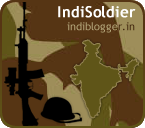Army chief General Dalbir Singh said that his men will not rest till every stranded civilian in Jammu and Kashmir is rescued.
Travelling on a rescue boat, Singh told that the major challenge was “reaching out to people”. “The challenge is to reach every last point. Because of the water current, the rescue operation is affected at some points… But it is our duty and we will rescue everyone who is still trapped. We have been working day and night,” Singh said. "It is our duty and we will rescue everyone who is still trapped. We have been working day and night,” Singh said.
Travelling on a rescue boat, Singh told that the major challenge was “reaching out to people”. “The challenge is to reach every last point. Because of the water current, the rescue operation is affected at some points… But it is our duty and we will rescue everyone who is still trapped. We have been working day and night,” Singh said. "It is our duty and we will rescue everyone who is still trapped. We have been working day and night,” Singh said.
On spotting a fallen Buddha statue at Badami Baug cantonment in Srinagar, Singh said — almost symbolically — that the “Buddha has fallen, but not broken”. He took a 30-minute ferry to Shivpora area of Srinagar — one of the worst affected places in the Valley. As people looked out of their windows and saw a boat ferrying a VIP, they waved to Singh, who waved back. But when he asked two young women if they wanted to be rescued, they refused. “People don’t want to leave their houses now,” said one of the officers. While house in the city are submerged in water 8-10 feet deep, the situation at the cantonment is no different. While officers’ quarters and offices are submerged, hundreds of Army personnel are isolated in various parts of the Valley. “We have not got time to assess our own damage. Our first priority is to rescue people. Once we take civilians to safety, the safety of our own people will be looked after. We will not rest till the last man is rescued. He also confirmed that two Army personnel who had gone missing on the night of September 6 in Phulwama during a rescue operation “have been lost”. He added that “last night, our boat capsized. We have rescued six while three are still missing”. Singh said that apart from rescue operations, the focus was on restoring communication and road network. “We have engaged our engineers. Task forces are coming with the equipment. As far as hygiene and sanitation is concerned, we have mobilised medical teams,” Singh said.
It is evening time and the maulvi here just sounded the ‘azaan’, the call for prayer and devouts rush inside to offer ‘namaaz’. Shortly thereafter, scores of people assemble in the tented courtyard of the mosque to have food. This is Jama Masjid in Hyderpora area which has turned into a major relief centre for those affected by the devastating floods in the Kashmir valley, housing hundreds of people, including women and children.
Significantly, in this hour of tragedy, this mosque has become a symbol of communal harmony as a number of Hindus, who had come from outside the state for work, are also taking shelter here. The inmates of this camp at the mosque, which remained unaffected by the floods, have come from various parts of the Valley and each one had a story of horror and pain to tell. They narrate how water started coming into residential areas, how quickly the levels rose and how each of them managed to escape the fury, some on their own, some with the help of the army and some with the help of locals. “I, along with other three members of family, left our house on Sunday evening (August 31) when water level started rising fast. I arranged for a boat and first dispatched my daughter to the masjid. Then rest of us followed suit. Since then, we are staying in this masjid,” says 58-year-old Bashir Ahmed Akhoon, a government servant. 60-year-old Khalida Akhtar narrates how she and six other members of her family, along with children, left their home in Tengpura in panic when water level rose on Sunday night.
“We first took shelter in a nearby hospital. But the building of the hospital also was in danger and distress calls were made to the police for help. Around midnight, the army came and rescued us. I am extremely grateful to them,” she says. She also expressed gratitude to the masjid authorities for providing shelter to the homeless family, which includes her husband, three sons, their wives and children. Her son Mohd Haroon says there were 2000 people in the hospital whom the army saved that night. “Though the distress call was made to the police, the army came to our rescue. We owe our new lives to them,” he says. Mohd Asif, a 26-year-old furniture craftsman from Tengpura, says he had gone to Magam in south Kashmir’s Anantnag to meet an aunt. When the water fury started, he rushed back, walking for three days before reaching home. “But I found my father, mother and two sisters missing. I looked around but did not find them. While I was losing hope, somebody suggested that I should look for them in Hyderpora masjid where many people have taken shelter. By God’s grace, I found them there,” he says. At the mosque premises, community kitchen is being run and donation of clothes is pouring in. The inmates are housed in the three-storeyed building.
Around 2400 people eat food every day at the masjid, says Haji Ghulam Nabi Dar, president of the Hyderpora Jama Masjid Committee. Affected people from far off places like Baramulla, Kupwara and Sopore have come here for shelter, he says. “We decided to set up the camp on Friday last when we saw the fury of floods increasing,” he said, adding the government has no role in running the camp and relief material is coming from the common people. He says people are angry at the administration as “they did nothing to help the victims”.
It is 10.45 pm and a team of seven from 7 Rashtriya Rifles has set out to rescue nine civilians from Bihar. It is a commitment to keep before winding up operations for the day. On one of its earlier trips, the team had heard them shouting for help and promised to return. The team has had a quick sip of tea, its only one since breakfast, before setting out from Badami Baug Cantonment. They are on a special, flat-based boat called BAUT, or boat assault universal type, fitted with an out boat motor (OBM). Team member Awasthy holds up a torch while two steer the boat. A right turn takes them along the Srinagar-Leh highway, now a waterbody in the city flowing parallel to the Jhelum. On the waters are reflections of trees while occasionally the carcasses of dogs and cows float by. The houses alongside are silent, the occupants having possibly fallen asleep after shouting for help all day. From one house flashes a mobile phone’s light; Awasthy shouts, “We will come back.” At times, the boat hits an electric pole. “Koi baat nahi. Peechhe lo,” a jawan tells the OBM operator. The team has learnt to deal with wires. The person in front grabs the wire, lifts it and hands it over to people sitting behind. The trick is to not leave it, for it can strangle one of them.
Near one tree, the boat takes a left turn into the area where the group is trapped. “Are bhai kaha ho,” one jawan shouts as the team flashes the light on the building. A voice from another building directs the team to where the target group is. The boat floats to the balcony on the second floor. The waiting group comes down from the third floor. A rope is thrown across and one by one, the group gets aboard. There is some space left and the officer now shouts at the man who had directed the boat here. “Do you want to come?” “No,” comes the reply. This has happened earlier; many have refused to leave their houses. On the way back, the boat reaches the house where a mobile light had flickered. Awasthy flashes his torch towards the window. There is no response. The occupant has possibly gone off to sleep.
The nine rescued register their names at an ad hoc counter. When it is over, it is 12.30 am. The team, out since 4 am, and drenched, breaks up. They will meet “tomorrow morning at 6 am”.
When nothing else worked in the time of flood, Facebook proved to be of big help for Sheikh Rizwan Javeed, who lives in Los Angles and was trying to get in touch with his family in Indiranagar, Srinagar. More than 21,000 people like Rizwan connected through a Facebook group — ‘Kashmir Flood Information Channel’ — have been helping each other look for their families. “I joined the group on September 7 when there were 800 members. Within days, the number increased to over 21,000,” said Javeed. “After six days, I was able to talk to my father. I can’t define the moment I heard his voice…I have no words to explain the problems my family had to go through.” “I was scared. I asked all my friends in other parts of India to help me. Some of them were a great help…I have found my family, but there are so many others in the Facebook group who are still looking for their families,” he added.
Air Force(AF) 12 Wing launched MI-26, the world’s biggest helicopter, to help in the ongoing relief operation in Jammu and Kashmir. The helicopter will operate in the forward areas ahead of Awantipur. The helicopter took off from the AF 12 Wing, Chandigarh and had seven tonnes of load which included one GPU (Generator Protection Unit), diesel, food, and technical equipment. “The helicopter is not a normal helicopter. It is largest and most powerful helicopter ever to have gone into production. This has been especially designed to meet the heavy lift requirements of the IAF and has a carrying capacity of 30 tonnes,” said Wing Commander G S Tung. He added, “The main rescue operation will start from the Awantipur Air Force Station in Jammu and Kashmir.”
MI-26 will also assist in infrastructure development as it can carry heavy machinery and load in a single sortie. “The helicopter will carry bridges, generators, hospital equipment and other relief material to the flooded areas. As the entire place is submerged in water, there is no possibility of landing of the helicopter in the affected areas. To overcome that, we will carry slung bridges and other heavy equipment,” G S Tung said.The Air Force had also deployed MI-26 in Uttarakhand during Operation Rahat. Talking about the difference in the two relief operations, he said, “During rescue operations in Uttrakhand, the focus was more on evacuation of people. However, this time in Jammu and Kashmir, with the water level receding, the focus is more on rehabilitating people by providing them infrastructure and relief material.”
Go here for Part 2
Heroes: J & Kashmir Floods: The Unsung Heroes of Rescue Operations
 Reviewed by Shwetabh
on
12:08:00 PM
Rating:
Reviewed by Shwetabh
on
12:08:00 PM
Rating:
 Reviewed by Shwetabh
on
12:08:00 PM
Rating:
Reviewed by Shwetabh
on
12:08:00 PM
Rating:























No comments: